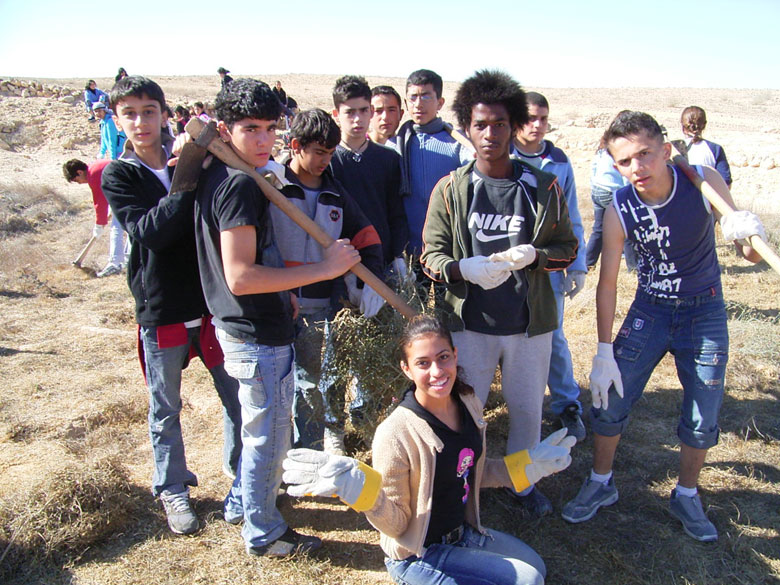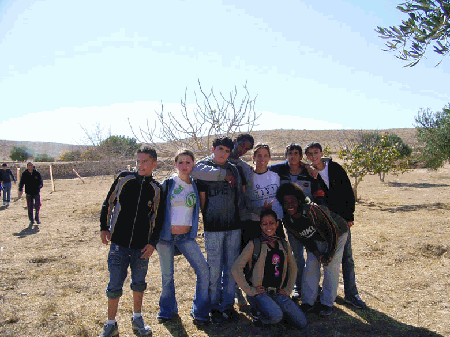 |
 |
In 2005 this work has continued through the winter where a farm maintenance project with students includes overturning of the soil, getting rid of bushes and brush, cleaning up the area, and planting. These kids at Nitzana High School are having fun, while taking care of their historic environment. Young Israeli soldiers serving in the desert who were on duty in the Negev, also help to rejuvenate the Negev ancient agricultural installations. The soldiers join with the high school students and staff to help plant new trees near an ancient agricultural terrace.

Survey Fig 1. Mapping the agricultural systems with G.P.S. The white hill at the upper left is the ancient town of Nitzana.
Survey Fig 2. Four meter wide wall terracing a wadi
Survey Fig 3. Terraced wadi at the restored farm near Nitzana
Survey Fig 4. Mapping the restored farm
Survey Fig 5. Wall surrounding a terraced wadi
Survey Fig 6. Ruins of a farmhouse from the Byzantine Period (5-7th Centuries C. E.) watching the agricultural terraces below
Survey Fig 7. Ruins of a farmhouse from the Early Islamic Period (7-8th Centuries C. E.). Notice the terraced wadi marked by the green line of bushes.
Survey Fig 8. Typical erosion in a terraced wadi
Survey Fig 9. Map of the Nitzana survey
Tuleilat el Anab Fig 1. Aerial photograph of Tuleilat el-Anab field near Nitzana.
(Photo provided courtesy of Ofek Aerial Photography Ltd.)
Tuleilat el Anab Fig 2. Tuleilat el Anab (grape mounds in Arabic) assumed to improve the efficiency of run-off rain water to the agricultural terraces in the wadi - (upper right, marked by the rich vegetation)
Tuleilat el Anab Fig 3. A single mound up to 1 meter in diameter and 0.4 meter in height
Tuleilat el Anab Fig 4. Excavating Tuleilat el-Anab
Tuleilat el Anab Fig 5. Cutting through one of the mounds
Tuleilat el Anab Fig 6. Section in one of the mounds
Tuleilat el Anab Fig 7. Soil sampling in the terraced wadi below the Tuleilat el-Anab field
Restored Farm Fig 1. The plantation in the end of the summer
Restored Farm Fig 2. Preparations to winter - burning the bushes
Restored Farm Fig 3. Winter rainstorm - runoff water
Restored Farm Fig 4. Runoff rainwater directed by channels to the terraces
Restored Farm Fig 5. View of the plantation irrigated by the runoff rain water
Restored Farm Fig 6. View of the plantation irrigated by the runoff rain water
Restored Farm Fig 7. Early spring - new grass growing between the trees
Restored Farm Fig 8. Early spring - new grass growing between the trees
Restored Farm Fig 9. Model of an ancient farm to demonstrate the mechanism of runoff rainwater irrigation
